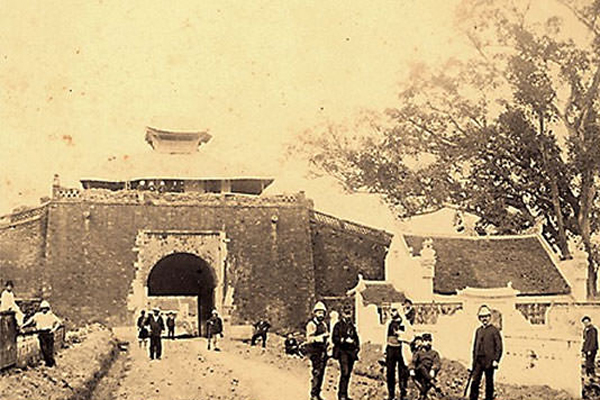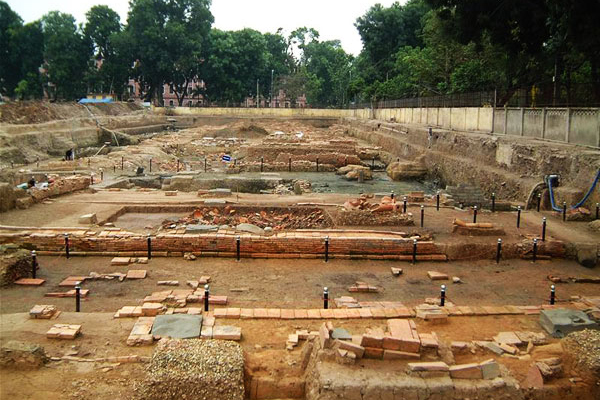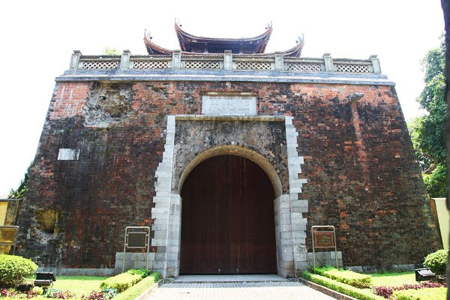Hanoi is composed of four parts: the old commercial quarter known as "Thirty six streets and guilds", the former French quarter, the outlying rural district and the Citadel. The latter is perhaps the most striking, and begs for more investigation into the history of Hanoi's historic fortifications.
The Citadel was constructed in 1803 at the behest of King Gia Long, founder of the Nguyen Dynasty. It originally reflected plans drawn up by French officers in the king's service and follows the Vauban fortification style. Each wall of the present-day four-sided fortress stretches for one kilometer.

Today, the Citadel's four walls stretch along Phan Dinh Phung Street to the north, Hung Vuong to the west, Tran Phu to the south and Phung Hung to the east. The north gate still bears two craters made by cannon balls fired by French troops during their 1873 attack on Hanoi.
The 1803 structure replaced and partially covered the royal citadels of the Ly, Tran and Le dynasties (11th-18th centuries). By that time, the site was no longer the seat of the royal court; Gia Long had transferred the capital to Hue to escape the hostility of northerners still sympathetic to the legitimate dynasty of the Le family. It was nonetheless to become the principle part of Hanoi, which in 1831 was formally designated as a province encompassing the former Thang Long area and some neighboring districts.
At the time, the Citadel was reserved for provincial mandarins, their staff and the garrison. All the other monuments of the period have since been demolished, with the exception of the Kinh Thien Temple. The Flag Tower, which still remains today, was built in 1812.
During the 11th-18th century span when Thang Long (Hanoi) was capital of the country, it comprised the separate enclosures of three cities contained within one border. The largest, which surrounded the two others, was the capital city (Kinh Thanh) or Civil City. This municipality embraced the Royal City (Hoang Thanh) which housed the ministers and servants attached to the royal family, as well as the Forbidden City (Tu Cam Thanh) where the king and his clan stayed.

The present-day space between the ruins of the Nguyen-era Citadel and the To Lich River, the western limit of Hanoi, was formerly occupied by the citadels and royal cities of successive dynasties. The first citadels date back to the period of Chinese rule, in particular La Thanh (8th century) and Dai La (9th century).
According to the British trader Samuel Baron, the ruins of the three walls of this ancient city and of the old royal palace give strong hints as to what they contained during their most glorious days. The palace itself embraced an area of 10 to 11 sq km. Its marble-paved yards, its gates and apartments, testify to the structure's former magnificence despite their ruined state.
Over the course of the ups and downs of history, foreign invasions, civil wars and fires, nearly all the palaces protected by the Citadel have been destroyed. The present-day fortress remains, however, to remind visitors and residents alike of the splendor of those years.



